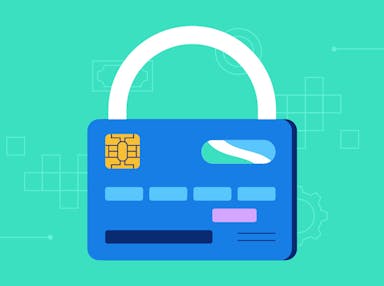
PHI vs PII: Key Differences & How to Protect Both
Anna Fitzgerald
Senior Content Marketing Manager
Jonathan Leach
Senior Manager, Compliance and Customer Success
Both Protected Health Information (PHI) and Personally Identifiable Information (PII) are types of sensitive data that require certain safeguards.
While PHI and PII share similarities, they differ in scope and regulatory oversight, among other factors.
Understanding the differences between PHI and PII is crucial for organizations handling sensitive information to ensure compliance and avoid penalties. Below we cover their major differences.
| PHI | PII | |
| Definition | Health information that can be linked to an individual and is created, received, stored, or transmitted by a covered entity or business associate, in any form. A subset of PII. | Any information that can be used to identify an individual, whether directly or in combination with other data |
| Examples | Medical record, laboratory report, hospital bill, insurance details | Name, social security number, email, financial info |
| Scope | Specific to healthcare | Broadly applies across industries and includes medical, educational, financial, and employment information | Protection | Governed by HIPAA in the U.S. | Governed by various laws and industry standards like GDPR, CCPA, PCI DSS, and more | Penalties | HIPAA violations can result in fines ranging from $100 to $50,000 per violation, with a maximum annual penalty of $1.5 million. Criminal charges and civil lawsuits may also apply. | Penalties vary by regulation. For example, GDPR can impose fines up to €20 million or 4% of global annual revenue and CCPA allows fines up to $7,988 per intentional violation. |
PHI vs PII definition
PHI and PII are both forms of individually identifiable data, but they are not the same. Let’s compare their definitions below.
What is PHI?
PHI, or Protected Health Information, refers to any health information that can be linked to an individual and is governed by the Health Insurance Portability and Accountability Act (HIPAA) in the U.S. This includes information that relates to:
- an individual’s past, present, or future physical or mental health or condition,
- the provision of health care to an individual, or
- The past, present, or future payment for the provision of health care to an individual, and that identifies the individual or for which there is a reasonable basis to believe can be used to identify the individual.
PHI is considered highly sensitive due to its potential impact on patient privacy and security. It is a subset of PII.
What is PII?
PII, or Personally Identifiable Information, encompasses any data that can identify an individual, either alone or when combined with other data. This includes PHI.
Since the loss of PII can result in substantial harm to individuals, such as identity theft, PII is regulated by various laws and standards across industries.
Recommended reading

110+ of the Latest Data Breach Statistics [Updated 2025]
PHI vs PII examples
To clarify the distinction between PHI and PII, let’s look at some specific examples of each.
PHI examples
Common examples of PHI include:
- Medical records
- Health insurance information
- Lab test results
- Prescription details
- Billing information linked to medical services

For a more complete list, we can look to the US Department of Health and Human Services (HHS). HHS specifies 18 types of identifiers that determine whether the health information is classified as PHI. These are:
- Names
- Identifying geographic information smaller than a state, including street addresses or ZIP codes
- Dates (except for the year) that relate to birth, death, admission, or discharge
- Telephone numbers
- Fax numbers
- Email addresses
- Social security numbers
- Medical record numbers
- Health plan beneficiary numbers
- Account numbers
- Certificate/license numbers
- Vehicle identifiers and serial numbers, such as license plate numbers
- Device identifiers and serial numbers
- Web universal resource locators (URLs)
- IP addresses
- Biometric data such as fingerprints or retina scans
- Full face images
- Any other information that could potentially identify an individual, including for current and planned medical situations like prognoses, treatment or rehabilitation plans, or mental health evaluationsPII examples
Common examples of PII include:
- Full name
- Social Security number
- Driver’s license number
- Passport number
- Home address
- Email address
- Telephone number
- Financial account details
- Date and place of birth
- Mother’s maiden name
- Gender
- Race or ethnicity
- Credit card number
These examples include both direct and indirect identifiers. Direct identifiers are unique to a person, like a social security number or passport number, so one is typically enough to determine someone's identity. Indirect identifiers are more general personal details like gender and place of birth so it typically requires a combination of them to identify an individual.
PHI vs PII scope
The scope of PHI and PII differs significantly in terms of industry application and regulatory requirements.
PHI scope
The scope of PHI is limited to the healthcare sector. It is primarily governed by HIPAA in the U.S. and applies specifically to health information that can be linked to an individual and is created, received, stored, or transmitted by healthcare providers, insurers, and their business associates. PHI is used in medical treatment, billing, insurance claims, and healthcare operations.
PII scope
PII is necessarily broad, encompassing any data that can identify an individual. Compared to PHI, PII has a much broader application across multiple industries and is used in customer accounts, financial transactions, marketing, and identity verification. Due to its broad scope, PII falls under various regulatory and industry frameworks including GDPR, CCPA, PCI DSS, SOC 2, and more.
Recommended reading

Understanding Security Frameworks: 14 Common Frameworks Explained
PHI vs PII protection
Both PHI and PII require strict security measures to prevent unauthorized access, breaches, and misuse. While some protections overlap, regulatory requirements vary.
PHI protection
PHI protection is primarily governed by HIPAA, which mandates compliance with the Privacy Rule and Security Rule.
Organizations handling PHI must implement and maintain a range of safeguards, including encryption and strict access controls to protect data in transit and at rest. Regular risk assessments are necessary to evaluate security measures, and employee training is required to ensure proper PHI handling. These are just a few examples of controls organizations must implement to comply with HIPAA.

PII protection
PII protection, on the other hand, varies depending on industry and the geographic location of your company or of the individuals’ data you’re collecting. For example, GDPR applies to any organization that collects and processes personal data from EU residents, regardless of whether the organization itself is based in the EU. CCPA applies to for-profit organizations that collect the personal information of California residents and meet one of three threshold requirements. PCI DSS applies to merchants and service providers that store, process, transmit, or could impact the security of cardholder data.
While these frameworks stipulate different requirements, there is some common overlap. Organizations handling PII must follow best practices, including:
- Adhering to data minimization principles, ensuring they only collect and retain necessary information
- Using multi-factor authentication (MFA) to protect access to sensitive data
- Having an incident response plan in place to manage potential breaches effectively
- Obtaining explicit consent to collect, process, store, and/or transmit PII
These are just a few examples of controls organizations must implement to comply with various frameworks and protect PII.
PHI vs PII penalties
Failing to protect PHI or PII can result in significant financial and legal consequences.
PHI penalties
HIPAA violations for PHI can lead to fines ranging from $100 to $50,000 per violation, with an annual cap of $1.5 million.
If a failure to implement proper safeguards leads to a breach of PHI, organizations must notify affected individuals and regulatory authorities, potentially triggering audits and investigations. In addition to civil and criminal penalties, companies may face class action lawsuits or legal action from patients whose data was compromised. Such incidents can also restrict an organization’s ability to work with healthcare providers or insurers in the future.
PII penalties
For PII, penalties depend on the regulatory framework. Under GDPR, fines can reach up to €20 million or 4% of global annual revenue, whichever is higher. The CCPA imposes fines of up to $7,500 per intentional violation, and additional penalties can be applied at the state and federal levels based on the specific law violated and the severity of the breach. While companies are not legally required to comply with PCI DSS, noncompliance can still lead to fines, legal action taken by individuals whose data has been compromised, decreased sales, and fraud losses.

Failure to protect PII or comply with any of these frameworks can also lead to public backlash, enforcement actions, and blacklisting from existing or prospective clients who demand robust security and privacy practices.
Now that we’ve covered the importance of PHI and PII protection, let’s go over some of the challenges that organizations face today.
Recommended reading

Non-Compliance Fines and Sanctions: Why It’s More Expensive Not to Comply with Regulations
Challenges of protecting PHI and PII
Safeguarding PHI and PII is becoming increasingly complex. Organizations must navigate evolving regulations, sophisticated cyber threats, and operational hurdles to keep sensitive data secure. Let’s briefly cover some of these challenges.
1. Expanding data environments
Data is no longer confined to on-premises systems—it’s stored across cloud services, mobile devices, and third-party platforms. This sprawl increases the risk of unauthorized access or accidental exposure of both PII and PHI.
2. Complex regulatory landscape
Organizations handling PII or PHI often operate across multiple jurisdictions, each with its own set of data protection frameworks like HIPAA, GDPR, CCPA, or PCI DSS. Staying compliant with multiple regulations and managing multiple audits can be a major challenge for organizations, especially for those using a manual approach.
3. Insider threats and human error
Employees, contractors, and vendors can unintentionally or maliciously compromise sensitive data. Whether through phishing attacks, misconfigured access settings, or lost devices, human error remains one of the leading causes of data breaches.
4. Inconsistent security practices
Organizations may lack standardized security protocols across departments or business units. Inconsistent implementation of encryption and access controls and manual processes for continuous monitoring can leave sensitive information vulnerable to attack.
5. Third-party risk
Business associates, cloud providers, and other third-party vendors often have access to PII or PHI. Without proper vetting and ongoing monitoring, these external relationships can introduce new vulnerabilities.
6. Rapidly evolving threats
Cyber attackers constantly adapt their tactics. Protecting sensitive data means staying ahead of increasingly sophisticated threats like ransomware, data exfiltration, and social engineering.
Recommended reading

15 Recent Cyber Attacks & What They Tell Us About the Future of Cybersecurity
How Secureframe can help you protect your sensitive data and comply with HIPAA, GDPR, and other relevant regulations
Understanding the differences between PHI and PII is essential for organizations handling sensitive data. While PHI is specific to healthcare and governed by HIPAA, PII applies across industries and falls under the scope of multiple regulations like GDPR, CCPA, and PCI DSS. Both PHI and PII more broadly require robust security measures to ensure compliance and avoid hefty penalties.
Protecting PII and PHI is complex, but Secureframe simplifies the process with powerful compliance and security automation that help mitigate the most common challenges. With Secureframe, you get:
- Pre-built frameworks: Secureframe tells you exactly what controls and evidence you need to meet the requirements of the framework that applies to the data you're processing—whether it's HIPAA, GDPR, CCPA, or others.
- Continuous control monitoring: Secureframe not only helps you implement the right security controls, like encryption, access controls, and audit logging, based on your unique environment and applicable frameworks — it also helps you maintain them over time with automatic continuous monitoring. This makes it easier to safeguard data from external threats and insider risks.
- Centralized risk management: With Secureframe, you gain visibility into your entire risk landscape. The platform helps identify vulnerabilities, track remediation efforts, and assign ownership, so nothing slips through the cracks.
- Employee training and policy management: Human error is a major risk factor. Secureframe provides built-in security awareness training and makes it easy to manage policies and procedures so your team understands how to handle sensitive data appropriately.
- Vendor risk assessments: Third-party risk is a critical piece of the data protection puzzle. Secureframe helps you evaluate vendors, monitor their risk posture, and track documentation so you can meet your due diligence requirements and reduce supply chain risk.
- Streamlined compliance across frameworks: Whether you're dealing with HIPAA, GDPR, CCPA, or other regulations and standards, Secureframe maps your existing controls across multiple frameworks—helping you manage overlapping requirements efficiently and stay audit-ready year-round.
Request a demo of Secureframe today to see how we can help you reduce the risk of data breaches, maintain regulatory compliance, and build a strong security posture to protect sensitive information effectively.
FAQs
Is PHI a type of PII?
Yes, PHI is a subset of PII that relates to individually identifiable health information. While all PHI is considered PII, not all PII qualifies as PHI. PII includes personal data beyond healthcare, encompassing educational, financial, and employee information and much more.
What are the key regulations that govern PHI and PII?
PHI is primarily governed by HIPAA in the U.S., while PII falls under multiple regulations, including GDPR (Europe), CCPA (California), and various state and federal laws worldwide.
How can organizations ensure compliance with PHI and PII regulations?
While different regulations will have different requirements, implementing strong encryption and access controls and following the data minimization principle are best practices that will likely help you meet overlapping requirements across frameworks. Regular and up-to-date employee training, risk assessments, and incident response plans are also crucial to achieving and maintaining compliance with most data protection frameworks.

Anna Fitzgerald
Senior Content Marketing Manager
Anna Fitzgerald is a digital and product marketing professional with nearly a decade of experience delivering high-quality content across highly regulated and technical industries, including healthcare, web development, and cybersecurity compliance. At Secureframe, she specializes in translating complex regulatory frameworks—such as CMMC, FedRAMP, NIST, and SOC 2—into practical resources that help organizations of all sizes and maturity levels meet evolving compliance requirements and improve their overall risk management strategy.

Jonathan Leach
Senior Manager, Compliance and Customer Success
Jonathan Leach is a cybersecurity and compliance expert with over a decade of experience spanning information security, GRC, IT risk management, and cloud security. Prior to joining Secureframe, he led compliance programs and audit readiness efforts for both Fortune 500 enterprises and high-growth startups. His background includes deep expertise in international frameworks such as ISO 27001, ISO 27701, and GDPR, as well as HIPAA and HITRUST. At Secureframe, Jonathan helps companies build scalable, audit-ready compliance programs from the ground up.